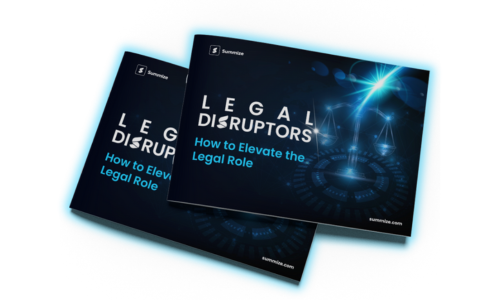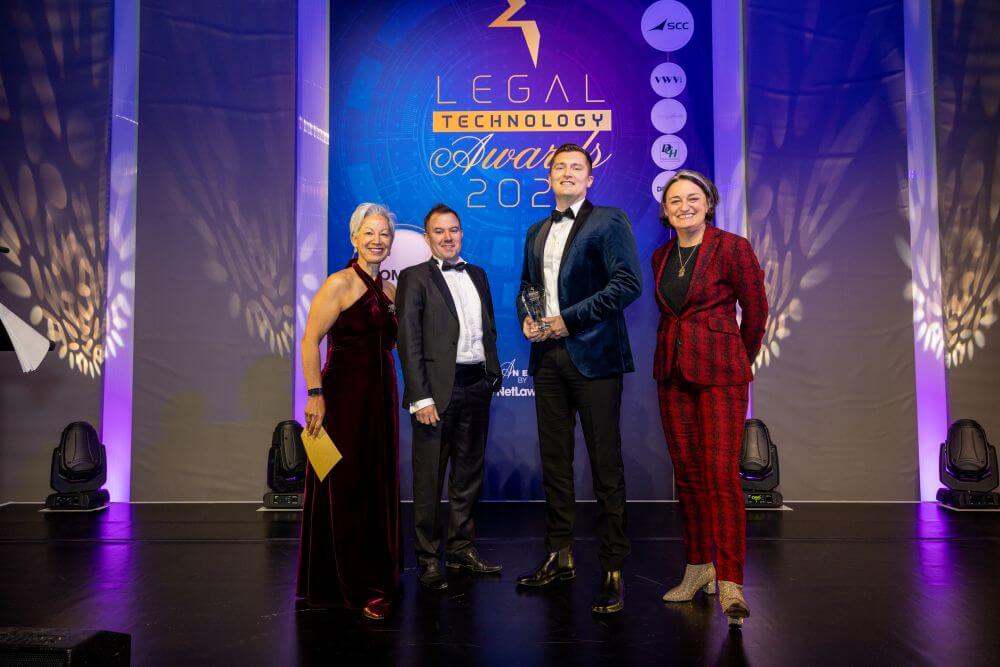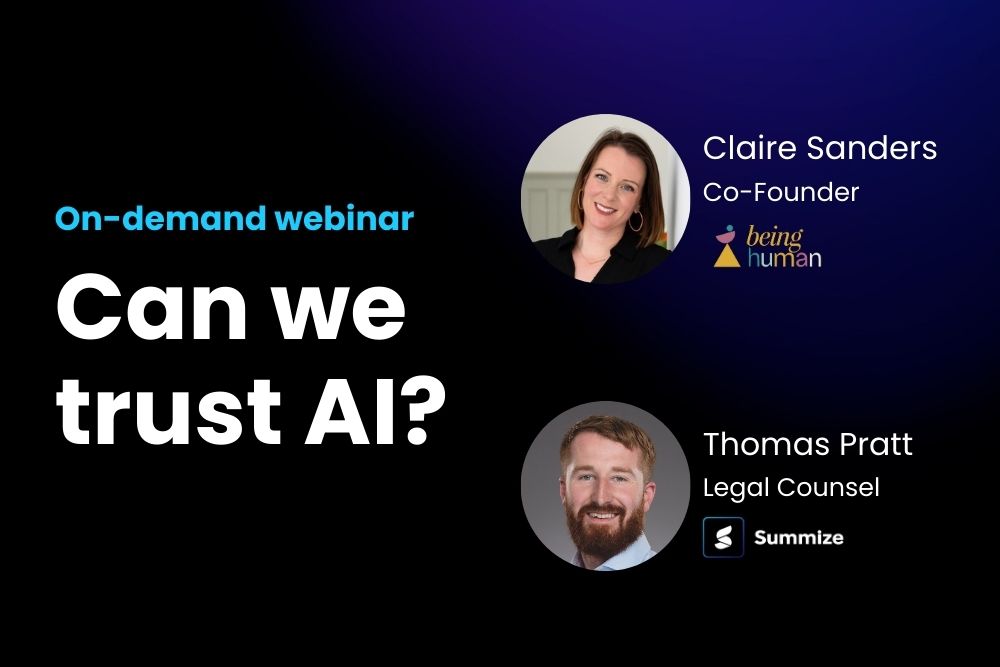How Ferdinand is leading change with AI and a pragmatic approach
It's Ferdinand's calm and pragmatic approach that makes him one of our Legal Disruptors. Learn from his approach to AI and legal tech and how he brings his team on a journey of discovery and curiosity.
July 30, 2025
November 25, 2025
Legal teams have likely heard the AI and legal tech pitch many times. They understand the pressure to adopt new tools, identify practical AI use cases, and demonstrate progress, all while maintaining the high legal standards their business demands.
It can feel overwhelming at first, but when you take a subtle and pragmatic approach, you can start making progress, even through small changes.
Often, it’s the small, considered changes that drive the most effective disruption. This is why we spoke with Ferdinand Wieland, Legal Counsel at IONITY, Summize customer and a subtle legal disruptor.
Ferdinand’s calm and pragmatic approach to adopting legal technology and understanding how legal should work with the wider business, has elevated IONITY’s legal team, making them strong, impactful and highly valued in the organization.
Ferdinand’s subtle legal disruption
IONITY is Europe’s leading ultra-fast charging network, founded in Germany and now charging electric vehicles all over Europe.
The electric vehicle industry is shaped by constantly evolving laws and regulations. As a result, IONITY’s legal team must remain proactive and agile. Maintaining this agility requires a pragmatic approach, one that Legal Counsel Ferdinand applies in his own work and instils in his team's mindset.
When asked how he stays agile, he explains that it’s firstly vital to align his legal team’s goals with the business’ broader objectives. Why? Because this collaborative, one team approach helps legal remain responsive and in control of how their outcomes fit within the overall organization. Ferdinand explains,
People from the wider business are my clients. It’s always about supporting them to achieve their goals and the business’ overall combined goals.
Tips for improving legal and business collaboration
For many legal teams, collaboration with the wider business is challenging. Often seen as the 'no' department or a bottleneck, it can be difficult to break down silos and negative perceptions.
It’s the people who don't know anything about legal that usually hate working with legal. But that doesn't need to be the case.
To positively change the view of legal, Ferdinand offers these steps:
- Firstly, ensure legal’s goals align with what the company is doing to get ahead
- Next, educate your business on your goals so they have a clear view of legal’s role and your value
- Once your business understands legal, take an agile, flexible approach to meet non-legal teams' needs in order to support their success
- Consider empowering your non-legal colleagues to get involved in tasks typically handled by legal. Use technology (set within legal’s guardrails) to make it quicker and easier for the teams to do this, which will overall improve the relationship.
Make sure legal is always about supporting the business to achieve their goals. I always try to find the best possible way to merge the two worlds of legal and the business together.
How to find practical technology use cases
Empowering your business colleagues to handle legal-related tasks with technology starts with your team leading the way in adopting and implementing the right tools.
When it comes to technology innovation, legal teams are usually the last to adopt. But at IONITY, the team takes a different approach.
They use legal tech and AI daily, such as contract lifecycle management (CLM) software to speed-up contract review tasks, and AI tools to help translate clauses and draft emails. Even though Ferdinand knows that some of these tasks won't take a long time to do manually, completing the tasks with AI takes seconds, and it all adds up!
Getting started can still be daunting, so Ferdinand advises to use tools, such as AI, in your personal life first to understand the nuances and outcomes,
Try ChatGPT with questions from your daily life and try to figure out how AI behaves, how everything works, and then try to adopt it in your professional life.
Once you begin to understand AI’s worth and practical use cases, it can be easier to understand it’s limitations too. Ferdinand explains how he uses AI just like he would if there multiple paralegals in his team,
What I'm always trying to do and where I'm always trying to motivate myself is let's just think about AI as your personal paralegal sitting right next to you taking over the research, administrative or just repetitive and low level tasks. This helps speed-up tasks so that I can concentrate on the more complex topics.
How to get your team onboard
Once Ferdinand started using AI effectively within his own legal work, he brought his team on the journey too.
He led workshops and collaborative sessions where team members shared how they were using AI tools and legal technologies.
We’re constantly thinking how can legal tech support our team? Where are options that we didn’t even consider? So we sit together from time to time just to talk about these topics.
He acknowledges that trust and use of such technologies takes time, as not everyone adopts at the same pace. The key is to keep conversations and learnings open, so that everyone feels confident experimenting and learning from trial and error as they figure out what works best.
Ferdinand’s steps to subtle disruption
Ferdinand is a reminder that legal disruption doesn’t mean completely overhauling processes, changes or setting his team on a difficult path. It’s about being subtle, having an open mind and always thinking about the overall goal.
Here are Ferdinand’s top tips to get you started:
- Understand the wider business. Learn the business’ wider goals and educate them on legal’s goals too. Once you’re more aligned, the easier it is to collaborate and respect each other’s path to success.
- Use AI in your personal life. AI and technology can help you be more agile and proactive but it can be difficult to know where to start. Therefore use AI in your personal life first to understand it’s strengths and weaknesses.
- Have open conversations. Create an open conversation within your team about technology. Have collaborative sessions where you discuss good use cases, what works and what doesn’t.
- Trial and error. Don’t be afraid to test AI and technologies and don’t worry if you don’t have the perfect answer the first time. Use trial and error and encourage the same from your team too.
As Ferdinand says, “I have to work for way over 30 years until my retirement. If I’m not embracing new ways of working now, it might be hard to catch up later.” His words remind us that changes will consistently happen, therefore it’s important to embrace disruption, try new ways of working, even subtle small ways, and this will create positive outcomes for both legal and the wider business.
Many thanks to Ferdinand for his time and wisdom! If you would like to explore even more legal disruptors stories, click the link below for inspiration.
Discover even more!
Explore more about contracting and CLM in our ultimate contract guides









